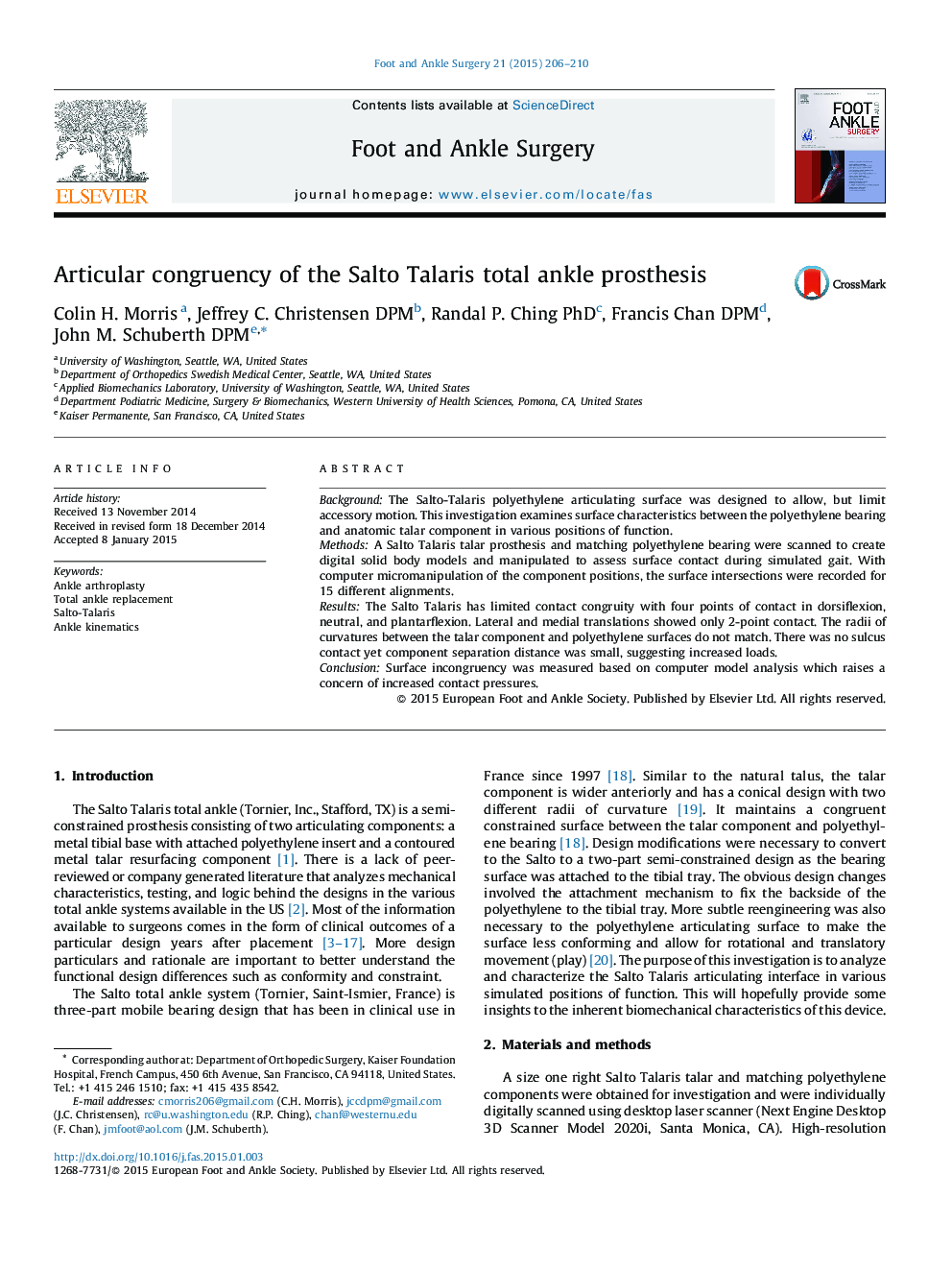| Article ID | Journal | Published Year | Pages | File Type |
|---|---|---|---|---|
| 4054528 | Foot and Ankle Surgery | 2015 | 5 Pages |
•The surface contour of polyethylene bearings in total ankle is not well described.•Semi-constrained prostheses allow for multiple degrees of freedom of motion.•Computer simulated imaging of Salto-Talaris prosthesis reveal incongruent surfaces.•The points of bearing contact will be smaller with incongruent bearing surfaces.
BackgroundThe Salto-Talaris polyethylene articulating surface was designed to allow, but limit accessory motion. This investigation examines surface characteristics between the polyethylene bearing and anatomic talar component in various positions of function.MethodsA Salto Talaris talar prosthesis and matching polyethylene bearing were scanned to create digital solid body models and manipulated to assess surface contact during simulated gait. With computer micromanipulation of the component positions, the surface intersections were recorded for 15 different alignments.ResultsThe Salto Talaris has limited contact congruity with four points of contact in dorsiflexion, neutral, and plantarflexion. Lateral and medial translations showed only 2-point contact. The radii of curvatures between the talar component and polyethylene surfaces do not match. There was no sulcus contact yet component separation distance was small, suggesting increased loads.ConclusionSurface incongruency was measured based on computer model analysis which raises a concern of increased contact pressures.
